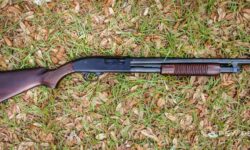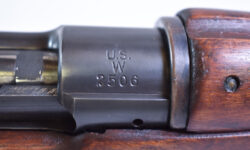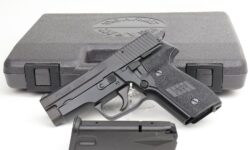M1A Socom vs Scout: The Pros and Cons of Each Rifle
If you’re looking for a powerful rifle that can take down targets at long range, you may be considering the M1A Socom or the Scout. Both of these rifles are popular options, but they have their own unique pros and cons. In this blog post, we will compare the M1A Socom vs Scout and help you decide which rifle is right for you.
M1A Socom vs Scout Rifle
The M14 rifle, which the M16A was derived from, was originally designed as a full-auto battle rifle. The M14 was used extensively in the Vietnam War by the US military. In 1964, the military began looking for a replacement for the M14. The AR-15, which is what the M16A would eventually become, was one of the rifles considered as a replacement for the M14. However, it lost out to another rifle, the XM16E0.
The XM16E0 would eventually become the M16A and would be adopted by the US military in 1967. The AR-15/M16 has been through many changes over the years and is still in use today by the US military and many other militaries around the world.
The M14 rifle was originally designed to be used with iron sights. However, the M16A was equipped with a carrying handle and an optic sight. The M16A also had a three-round burst feature that the M14 did not have. The M16A soon replaced the M14 as the standard-issue rifle for the US military.
The Scout is a more recent addition to the AR-15/M16 family of rifles. It was designed as a shorter and lighter version of the M16A for use by troops in combat situations where a longer and heavier rifle would be impractical or too difficult to carry.
One of the main differences between the M16A and the Scout is the length of the barrel. The M16A has a 20-inch barrel, while the Scout has a 16.25-inch barrel. This makes the Scout about a pound lighter than the M16A.
Another difference between these two rifles is that the Scout has a collapsible stock, while the M16A does not. The collapsible stock makes it easier to transport and store the Scout, but it also makes it less stable when firing at long range.
The final difference between these two rifles is that the Scout uses detachable magazines, while the M16A uses internal magazines. Detachable magazines are more convenient to use, but they can also be lost or damaged more easily.
The M14 rifle was originally designed to be used with iron sights. However, the M16A was equipped with a carrying handle and an optic sight. The M16A also had a three-round burst feature that the M14 did not have. The M16A soon replaced the M14 as the standard-issue rifle for the US military.
The Scout is a more recent addition to the AR-15/M16 family of rifles. It was designed as a shorter and lighter version of the M16A for use by troops in combat situations where a longer and heavier rifle would be impractical or too difficult to carry.
How accurate is the M1A Socom?
The M14-based M16Achilles heel has always been its accuracy, or lack thereof. The M14 was designed as a battle rifle to be used at ranges beyond 300 yards, while the AR-15 was designed as a close quarters combat weapon. As such, the M16’s shorter barrel and lighter weight make it less accurate than the M14 at long range.
However, the M16’s inaccuracy can be greatly improved with the addition of a quality scope and bipod. With these upgrades, the M16 can become quite accurate out to 600 yards or more.
How accurate is the M1A Scout?
The M14-platform rifle is generally known for its accuracy, and the M14A Rifle is no different. The M14A Rifle was first built with a match-grade barrel, meaning that it was designed to shoot as accurately as possible. The M14A Rifle can also be outfitted with a number of different optics and scopes to improve its accuracy even further.
However, the Scout model of the M14A rifle takes things one step further. The Scout model is equipped with an extended 22″ barrel which gives the bullet more time to spin and stabilize in flight, resulting in even greater accuracy. In addition, the Scout model comes with a detachable magazine which allows you to quickly and easily reload your rifle without having to fumble around with loose rounds.
What is the effective range of a M1A Socom?
The M14 rifle, which the M16A assault rifle is based on, was originally designed with a 600 yard range in mind. The M16A’s effective range is only about 400 yards. The M14 socom has a shorter barrel than the standard M14 and thus has a shorter effective range of about 500 yards. The Scout, on the other hand, has an even shorter barrel and an effective range of only 300 yards. So if you’re looking for a longer-ranged option, the Socom is the better choice. If you need something more compact, though, the Scout may be a better option.
Another thing to consider is magazine capacity. The Socom comes with a 20-round magazine as standard, while the Scout only comes with a 12-round magazine. If you’re looking for more firepower, the Socom is again the better choice. However, the smaller magazine size of the Scout may be advantageous if you need to move quickly and don’t want to be weighed down by a lot of extra ammunition.
Finally, price is always a consideration when choosing any kind of firearm. The M14 socom typically costs around $2000, while the Scout typically costs around $1700. So if cost is a major factor in your decision-making process, the Scout may be the better option for you.
What is the effective range of a M1A Scout?
The M14 rifle, officially the United States Rifle, Caliber .308 Winchester, is an American selective fire automatic rifle that fires seven rounds in a magazine. It is chambered for the .308 Winchester cartridge, which is also known as the “seven-six-two cartridge”. The M14 was first used by the United States military in 1959.
The M14 rifle has an effective range of 500 meters when used with iron sights, and 800 meters when used with a telescope. The Scout version of the M14 has a shorter barrel than the standard M14, and is therefore less accurate at long range. However, the shorter barrel makes the Scout easier to handle in close quarters combat situations.
Both rifles have their pros and cons, so it really comes down to what you need the rifle for. Whichever rifle you choose, make sure you are familiar with its features and capabilities so that you can use it to its full potential.


